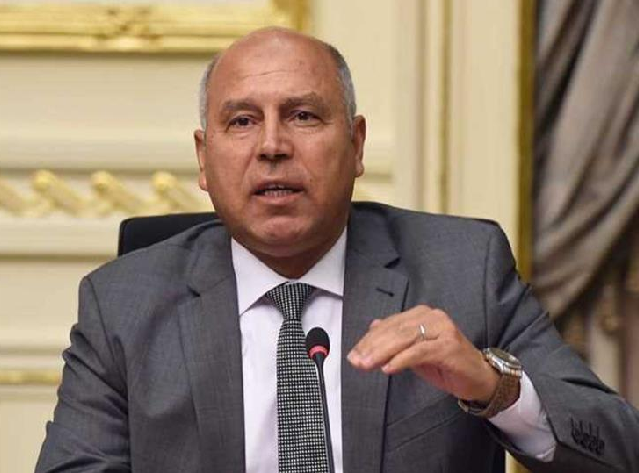NEW ALAMEIN, Egypt – Work is progressing in full swing on the first line of the High-speed rail (HSR) network project, Deputy Prime Minister for Industrial Development and Minister of Industry and Transport Kamel el Wazir said.
Significant progress has been made in the construction of the project’s stations, with all work being carried out to conform to high-quality standards, Wazir added during an inspection tour of the Ras El Hikma Station project site, accompanying Prime Minister Mostafa Madbouli.
Efforts are ongoing around the clock to complete the project as planned, the minister said.
He added that the first line covering Ain Sokhna, Alamein, and Marsa Matrouh spans 675 km and includes 21 stations.
The project also features a control and monitoring center, with a fleet of 15 high-speed trains, 34 regional trains, and 14 freight locomotives, as part of the Sokhna/Dekheila logistical corridor, according to him.
The deputy premier said a consortium of Siemens, Orascom, and Arab Contractors is carrying out the project.
Three Velaro high-speed trains have been completed, with two more currently being built, he said. Additionally, five Desiro regional trains have been completed, one of which has been shipped to Cairo, and seven more are being built, he also said. Two electric freight locomotives have also been completed, he added.
The network will cover various parts of the country and serve as development arteries that support both new and existing urban and industrial areas, such as the industrial zones in Helwan, 15th of May, Borg El Arab, 6th of October, New Minya, New Assiut, and others, Wazir said.
He added that the high-speed electric train network will also serve Egypt’s tourist, cultural, historical, religious, and coastal areas, including tourist destinations in Giza, Sohag, Luxor, Aswan, Abu Simbel, the Red Sea, and other tourist spots.
The network will also support new agricultural areas such as New Delta, Egypt’s Future, Egypt’s Paradise, West Minya, Toshka, and East Owainat. Additionally, it will contribute to creating logistical corridors connecting the Red Sea and the Mediterranean, as well as the northern and southern regions of the country.
The minister pointed out that the high-speed electric train network links industrial areas (production zones) to seaports (export hubs) and connects modern agricultural development areas to consumption zones and export ports. It also interlinks various tourist areas, enabling diverse tourism programs within a single trip.
The network will also integrate with airports, seaports, and land routes to achieve the concept of multimodal transport, connecting seaports with dry ports and logistics centers.
The three lines of the high-speed electric train network will also provide thousands of direct and indirect job opportunities.
The total length of the network reaches 2,000 km and consists of three lines: the first line (Sokhna / Alamein / Matrouh), the second line (6th of October / Luxor / Aswan / Abu Simbel) with a length of 1,100 km, and the third line (Qena / Hurghada / Safaga) with a length of 225 km.
The three lines will include a total of 60 stations, two main workshops, and six light maintenance workshops, with 41 high-speed trains, 94 regional trains, and 41 freight locomotives.
During this tour, Prime Minister Madbouli and his accompanying officials watched a presentation about Ras El Hikma Station that covers 142,800 square meters and consists of three floors, three platforms, and four tracks.
The station is located along the high-speed rail route next to the international coastal road and in front of Ras El Hikma City. It will serve the residents, visitors, and workers, given the planned investment, tourism, and development projects that will require a workforce and a safe, fast, and modern transportation method.






Discussion about this post